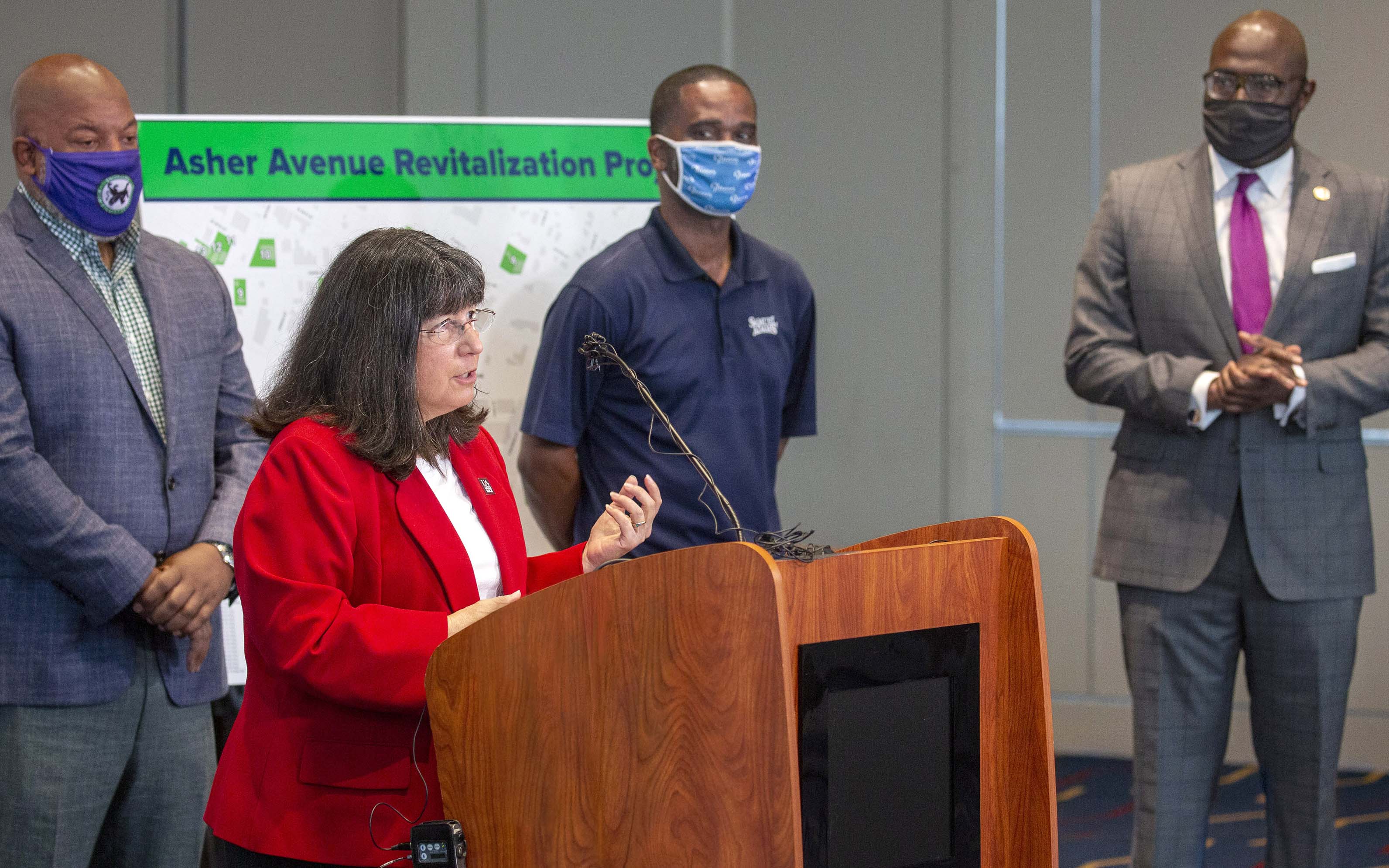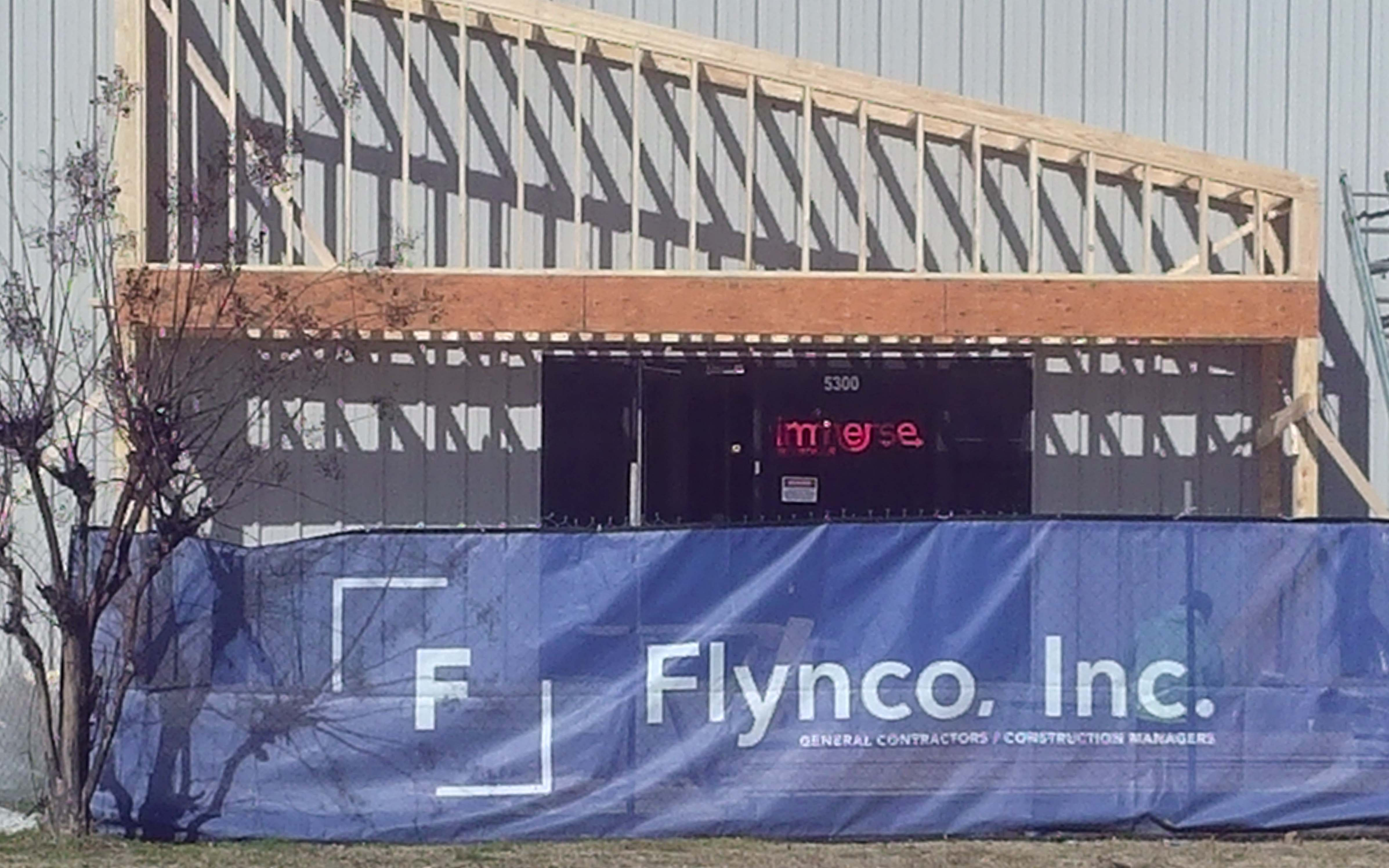Asher Ave. headlines plans south of I-630/east of I-30
February 8-14, 2021
By Dwain Hebda
A man sits on an overturned milk crate, leaning against a stop sign. Next to him is a small pile of junk, apparently for sale – a couple of hubcaps, a gas can or two, indiscernible plastic jugs filled with clear liquid. No one in the queue of cars waiting on the light are buying and the man seems resigned to that; one red light after another, he doesn’t even rise from his seat, barely looking up.
From his makeshift enterprise, the man looks directly across the street at a squatty liquor store, bristling with steel cage across windows set afire with neon beer signs. It’s not much to look at, but then liquor stores are not for looking and at any given time, three or four figures linger outside, sipping on brown paper bags. They stare at him and he stares back.
Up the street, past the boarded-up Sonic and dingy motel, a small used tire shop stands wobbly on bare ground the color of tar. Further still, more entrepreneurs stake their wares, hawking knock-off clothing or some other knick-knacks on a moonscape vacant lot. Few cars stop here in the daytime; fewer still even slow down through here at night.
Welcome to Asher Avenue, a living postcard of despair and decay, brought on by generations of racial marginalization and economic drought. It’s the kind of area that shames the city for its systemic neglect, a self-perpetuating ecosystem of crime, drugs and poverty.
Mayor Frank Scott Jr. knows Asher Avenue, as well as Little Rock’s other neighborhoods just like it, huddled behind the border walls of Interstate 630 and Interstate 30. And he’s seen enough.
“My administration’s internal ‘why’ has been to unite Little Rock and we do that by growing and transforming the city,” he said. “So, when we think about moving from being disconnected to connected, we have to think about the areas that have been historically underserved and what we can do to revitalize those areas.
“You know the story about that cementation of 630 and what it’s done to that sector of the community for many years. We felt it was time for the city to have a strategic initiative to lead in the development and revitalization of south of 630 and east of 30,” continued Scott.
Last fall, the city’s first duly elect Black mayor unveiled a vision for infusing capital and opportunity into some of the city’s poorest neighborhoods, areas struggling to breathe let alone grow. The plan included waived permit fees for development in the city’s opportunity zones – 12th and University, Dunbar neighborhood, Main Street/downtown, blocs of east Little Rock – as well as other segments of Ward 6 and Ward 7. Central Arkansas Water and Little Rock Water Reclamation Authority similarly waived or discounted utility setup fees.
On top of that, the mayor announced a redevelopment plan for the rutted Asher Avenue corridor, a particularly high-risk, high-reward gambit likely to be the defining initiative of his reign as mayor. To borrow a lyric, if the mayor’s vision and strategy can make it there, they can make it anywhere.
“We’ve had a tenure of stagnation in Little Rock. In that period, many of our low-income individuals and areas were not paid attention to enough,” said Scott. “That’s not to say the previous leaders did not pay attention to it, but it wasn’t an all-out effort to target these areas in our city.
“Asher Avenue has been known for being a low-income and high-crime area, but it’s also a major thoroughfare, a lot of good small businesses are there. We know the area is in need of more vibrancy; we wanted to start by having an economic incentive package for that particular targeted area for community development.
“Right now, we’re prioritizing all development because it’s been a dearth of development for quite some time. We don’t subscribe to having just one focus at this time,” he said.
****
One of the mayor’s first phone calls for a partner was to the University of Arkansas Little Rock and small wonder. An oasis of cool green spaces and sharp, well-kept buildings, UA Little Rock is a sparkling gem in a neighborhood struggling with spans of bare concrete, stop-and-go congestion and roadside trash.
The university has not just been content to look after its own 250-acre campus but has been a driving force in the improvement of the surrounding residential area. And, as the owner of the 190,000-square-foot University Plaza Shopping Center, it represents a major anchor in the mayor’s vision for the Asher Avenue business corridor.
“When we got the call on this particular project, it wasn’t a surprise. We’d previously been working with the mayor’s staff around several different initiatives,” said Joni Lee, vice chancellor for university affairs. “We have the University District Program, but then we also have an established University District Development Corporation, an organization that’s made up of the university, business people and neighborhood people.”
“Through the University District Development Corporation, we do a lot of work in the Oak Forest neighborhood, just east of campus. We buy and renovate houses, we’ve constructed new homes and we do a lot of rehab projects with owners. That work goes back 20 years to when we formed the University District.”
The University Plaza property will be even an even more visible stabilizer for the corridor. Purchased decades ago, by UA Little Rock, the shopping center has been home to various retail tenants as well as a growing number of university departments. Lee said the structure was slated for redevelopment even before the mayor’s initiatives and fits hand-in-glove with what the city hopes will come to fruition all along Asher Avenue.
“We’ve had a lot of people in the development world calling us, wanting to be a part of what can be there,” she said. “We’re going to be meeting with the neighborhood and business owners to make sure we have the latest information on what people would like to see. Whatever we develop, it will be something both the campus community and the surrounding area will find the need for and will utilize.”
In addition to the mall redevelopment – soon to enter the RFP phase – Lee said the university helps the immediate neighborhood in other ways, including leveraging student help to homeowners and entrepreneurs, creating a living classroom in the process.
“One of the biggest advantages we have is the expertise of our faculty and our students to apply to problems and community issues,” she said. “Everything we outline for the neighborhood or for businesses around the campus, we typically have students working on a range of projects.”
“Law school students at the Innovation Clinic at the Bowen School of Law work with University District Development to identify derelict property, then looking into liens or other title holds on those properties. They do the legal work to get that property to a place where we can take it in to renovate it.”
“We also use business students to help people in this part of the city who want to start a business or may already own a business. They need help with business plans or whatever, we work with the Small Business Development Center, which is on campus. We very much see that as a rich opportunity to provide our students real-world experiences. That’s built into everything we do.”
****
Amid the financial incentives and deferred capital gains, Mayor Scott says such educational efforts are key to the success of the neighborhood revitalization. He said for as much as he is welcoming outside investors and development, he is equally committed to helping existing and future entrepreneurs in their various enterprises, to bring about what he calls equitable economics.
“In addition to having revitalization from a development side is really focusing on the technical education for our entrepreneurs as it relates to operational excellence and how they can be more efficient and effective with their existing businesses,” said the mayor. “One thing we’re planning to announce is an academy where we’re teaching not only existing entrepreneurs but startup entrepreneurs in a six-month technical education course to help them achieve more financial excellence in their businesses.”
Attention is also being paid to residential areas to help prevent gentrification whereby higher property taxes drive people out of their longtime homes or subject them to predatory speculators. Work such as what UA Little Rock has done through the neighborhood corporation is key to heading off this negative byproduct of growth, Scott said.
“That goes back to our focus, not only of equitable economics, but we want to steer away from gentrification and focus on mixed-use developments with an equitable focus,” he said. “From a policy standpoint, if and when there is a need to freeze property taxes for incumbent residences in particular areas, those are things we can put in place. We haven’t seen a need at this time, but it’s top of mind. We never want to price out existing residents.”
“We will put policies in place to do our best to protect the property values of the incumbent residents. One of our main mantras is we want to do things with the community not to the community. We’re listening as we’re doing things.”
Thus far, the mayor contends, the early stages of the plan have been positive. Nearly $250,000 of development fees have already been waived as new residential subdivisions and commercial improvements have been initiated, including a new charter school. It’s too soon to call it a victory, but at least one Asher Avenue resident likes what it sees.
“The university tries to play the role of being a voice to the city for this part of Little Rock,” said UA Little Rock’s Lee. “It’s been exciting in the last six months to see the return of interest to this area. We do credit a lot of that attention to the mayor and his focus.”
“The work that we do and have been doing for a long time really points to a different type of university focus than you might see from other places. We’re not a closed system here. The university is very open to the surrounding area,” said Lee. “We take that seriously; it’s very important to the people who live here in the area that UA Little Rock is here as an anchor institution. Our mission in the community is something very real to us.”
PHOTO CAPTIONS:
1. Christina Drale (at the podium) speaks about Asher Ave. corridor development during a news conference in September at UA Little Rock. Mayor Frank Scott (far right) looks on. (Photo by Ben Krain, UA Little Rock)
2. Local contractor Flynco Inc. moves forward with construction on the new headquarters for local nonprofit Immerse Arkansas. Under Mayor Frank Scott’s local revitalization plan, Immerse Arkansas’ is within the geographic area that will benefit the Asher Ave. corridor. The mayor’s plan provides incentives for businesses along Asher Ave., south of I-630 and west of I-30, to engage in redevelopment or demolition to improve the aesthetics and opportunity for the future development of the area. (Photo by Daily Record staff)




